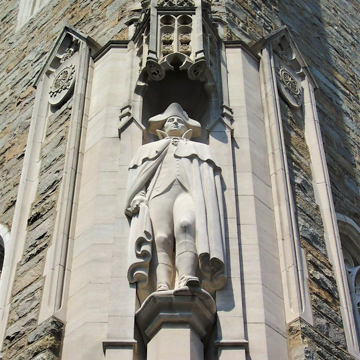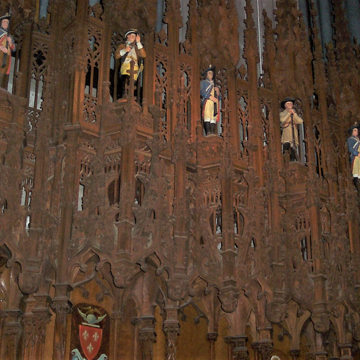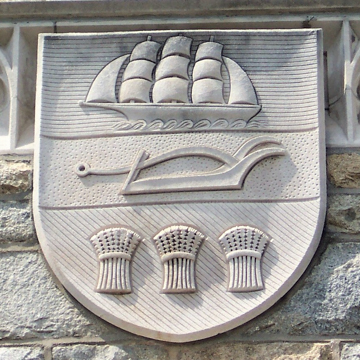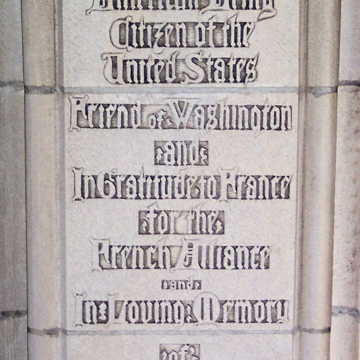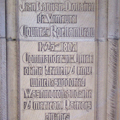Valley Forge is the nation's memorial to George Washington's triumph over failure, where his American troops were hardened into an effective fighting force with the staying power that ultimately led to victory in 1781. Little from Washington's time survives save for a few eighteenth-century stone houses, a covered bridge, and the appropriate name of an early water-powered forge. The park is graced by two modern memorials, the immense Napoleonic early-twentieth-century limestone memorial arch by Cret of 1912 and the Gothic Revival Thanksgiving bell tower (1915) and memorial chapel (1920) by Zantzinger, Borie and Medary, the architects of elite 1920s Episcopal churches, whose members had typically returned to honoring hierarchic British culture. The bell tower and church show the shift toward personal interpretation of historic Gothic forms that look to Bertram Goodhue's St. Thomas Church in New York City. Particularly memorable are Nicola D’Ascenzo's brilliant stained glass windows whose deep blues and sharp reds add an aura of mystery to the interior. In 2004, the National Park Service commissioned Robert A. M. Stern and landscape architects Andropogon Associates to design a new museum of the American Revolution with the requirements that it convey the experience of place that forged American resolve while not overwhelming the site. Stern's solution would have tucked a three-story glass-sheathed space up against a quarry wall while avoiding the Colonial Revival strategies that might have seemed more obvious. At this writing, the museum's future is caught up in the politics of the region and is likely moving to Philadelphia's Independence Mall ( PH12.1)—another sad ending prompted by the excesses of the preservation movement.
You are here
Valley Forge National Historic Park
If SAH Archipedia has been useful to you, please consider supporting it.
SAH Archipedia tells the story of the United States through its buildings, landscapes, and cities. This freely available resource empowers the public with authoritative knowledge that deepens their understanding and appreciation of the built environment. But the Society of Architectural Historians, which created SAH Archipedia with University of Virginia Press, needs your support to maintain the high-caliber research, writing, photography, cartography, editing, design, and programming that make SAH Archipedia a trusted online resource available to all who value the history of place, heritage tourism, and learning.


















